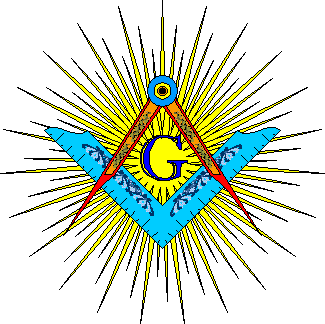
History of St. Sacrement Lodge 1029 F. & A. M.
Freemasonry came to the Lake George region in the middle of the 18th Century. The earliest notation of a Lodge was a Military Lodge at Lake George listed in the Boston records for the 60th Foot, Royal American Regiment on April 8, 1757. It was of Scottish Registry and its Master Col. John Young was appointed on November 14, 1757 to be the Scottish Provincial Grand Master.
From this date on, we have only record of 13 other Military Lodges coming to the area and all of these were during the Revolution.
The Royal Regiment of Artillery, 1st Battalion had 2 lodges, one composed of members of Company 4 and the other Company 6, operating under warrants No. 187 and 189 of the Grand Lodge of England (Ancients). They were at Crown Point, Fort George, Fort Edward, and Saratoga where they were captured and later released.
The 53rd Regiment, Shropshire Light Infantry, working under Irish Registry #236 issued in 1753 also was at each of the places mentioned before. And last, the 47th Regiment, Lancshire Regiment, of Irish Registry #192, of special interest because it had 2 companies stationed at Diamond Point.
After the Revolution there was a general movement of people in and out of the area. More were moving in and staying. The growth was slow but effective. Many of the settlers and transients were sojourning Masons. It was only natural that they wished to establish lodges and they proceeded to request dispensations and warrants. By 1817, the records that less than 1.5 people per square mile were in the area. It took a full day to make the round trip to Hamilton Lodge 144 in Queensbury. Lodge was usually held in late afternoon of evening and after repast the members could travel 10 miles or more to get home.
On June 27, 1817, Clinton Lodge was warranted at Caldwell, where it continued to operate until 1826 when it moved to Warrensburg. Brother Roden in his History of Warrensburg Lodge states that the last minutes were May 23, 1828.
The Anti-Masonic movement erased all of the lodges in what is now Washington and Saratoga-Warren Districts save one, St. John's 22 was the sole survivor.
Another Lodge was constituted in 1825 at Bolton known as Ferry Lodge No. 437. It too did not survive the effects of a shifting population and the Ant-Masonic movement.
After the excitement of the 1820s and 1830s subsided, an attempt to start another Lodge at Bolton was made. This Lodge was to have been called Hiawatha Lodge. No record of it appears in the Proceedings of Grand Lodge, but its reference is in the minutes of Warrensburg Lodge 425.
In 1886, Brother D.W. Hamilton of Ark Lodge No. 48 of Coxsackie, several other sojourning brothers, and members of Warrensburg Lodge 425 petitioned Grand Lodge for a new Lodge to be located in Lake George. The Transactions show that the petition was received along with several others.
In the Transactions of the Annual Communication of Grand Lodge for 1886, in the Address of M:. W:. Frank R. Lawrence, Grand Master (page 18):
New Lodges - "Numerous petitions have been received for dispensations to form new lodges, but not being satisfied in any case that an actual necessity existed for the creation of the proposed new lodge, and believing, with my predecessors of recent years, that the number of lodges is already larger than is consistent with the highest measure of prosperity, I have, without ant exception, denied all such applications."
Thus the petition of a new lodge in Lake George died. This concern was quite prevalent for many years and had been forcefully expounded during the Grand Mastership of James Gibson in 1869. The feeling was that too many lodges would cause many problems, among them, dilution of effort, unstable support for the Lodge and Grand Lodge, poor work, and many other arguments.
"It is not in numbers that our strength lies, but in the principles of the fraternity, thoroughly learned, and faithfully practiced by the brethren. Masonry cannot be brought to every man's door, for with lavishness follows satiety; and that which is obtained with ease, and got without cost or labor, is soon deemed of little value. Its cheapness makes it to be despised."
In retrospect, it was unfortunate that Lake George was caught in this prevailing thought of the time for they had to wait 37 years before their Lodge would become a reality.
The Proceedings of Grand Lodge states that on November 2, 1923 a Dispensation was granted to various brethren to establish St. Sacrement Lodge at Lake George. The Charter was approved on May 8, 1924 and Constituted on June 25, 1924.
The first Master was John J. Bryant and at the Constitution Ceremonies, his father Frank Bryant presented his son with a gavel. Bro. Frank Bryant explained that the gavel had been made from a tree from which the family had procured their supply of switches for a number of generations.
* News * Forum * Warren * Washington * Saratoga * Essex * Clinton * Additional Topics * Concordant Bodies * Membership * Donations * Names * Home *